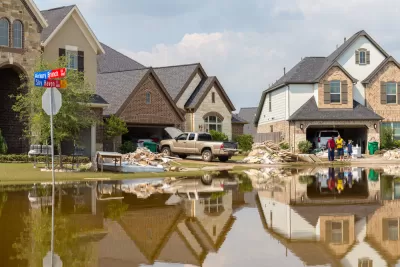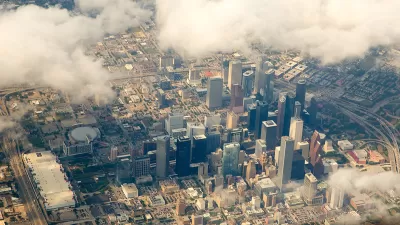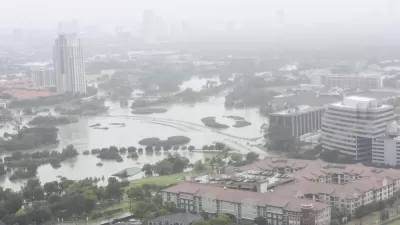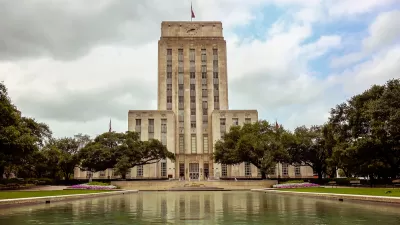Despite the devastation wrought by Hurricane Harvey, builders and buyers alike are sustaining a market for new construction on land likely to get flooded again.

Some Houston developers and homebuyers seem to "see opportunity in devastation," according to reporting by Mike Morris and Matt Dempsey. "One in 5 new homes permitted in Houston in the year after Hurricane Harvey is in a flood plain — some on prairie developed for the first time after the storm — even as new rainfall data showed existing flood maps understate the risk posed by strengthening storms."
Many of those permits went to owners razing and elevating flooded homes, but plenty of new construction is also occurring, including "clumps of townhomes, packing more families into the flood plain."
In April, Houston's city council tightened rules on flood plain construction, extending "regulations from the 100-year flood plain to the broader 500-year flood plain and [requiring] new homes built in those areas to sit higher off the ground." But Mayor Sylvester Turner doesn't see a future in abandoning those areas outright. "Houston cannot and should not abandon a third of the city to avoid flooding any more than San Francisco should abandon numerous established neighborhoods that could be affected by earthquakes," he said.
Other civic leaders disagree, and have called for the eventual depopulation of the flood plain, "perhaps by pouring billions of dollars into buying out tens of thousands of at-risk homes." Meanwhile, some developers think the post-Harvey rebuilding spree will have a limited shelf life, arguing that heightened regulation and the cost of elevated homes will eventually deter builders from choosing flood plain sites.
FULL STORY: Even after Harvey, Houston keeps adding new homes in flood plains

Study: Maui’s Plan to Convert Vacation Rentals to Long-Term Housing Could Cause Nearly $1 Billion Economic Loss
The plan would reduce visitor accommodation by 25,% resulting in 1,900 jobs lost.

Americans May Be Stuck — But Why?
Americans are moving a lot less than they once did, and that is a problem. While Yoni Applebaum, in his highly-publicized article Stuck, gets the reasons badly wrong, it's still important to ask: why are we moving so much less than before?

Placekeeping: Setting a New Precedent for City Planners
How a preservation-based approach to redevelopment and urban design can prevent displacement and honor legacy communities.

How the ‘Direct Vision’ Design Approach Saves Lives
Designing large trucks to ensure better visibility for drivers can reduce fatal crashes and improve workplace safety.

San Diego Swaps Parking Lane for Kid-Friendly Mini Park
The block-long greenway will feature interactive play equipment and landscaping.

Tracking the Invisible: Methane Leaks From LA’s Neighborhood Oil Sites
Environmental advocates are using infrared technology to monitor and document methane leaks from neighborhood oil sites, filling regulatory gaps and pushing for stronger protections to safeguard community health and the climate.
Urban Design for Planners 1: Software Tools
This six-course series explores essential urban design concepts using open source software and equips planners with the tools they need to participate fully in the urban design process.
Planning for Universal Design
Learn the tools for implementing Universal Design in planning regulations.
Caltrans
Heyer Gruel & Associates PA
Institute for Housing and Urban Development Studies (IHS)
City of Grandview
Harvard GSD Executive Education
Salt Lake City
NYU Wagner Graduate School of Public Service
City of Cambridge, Maryland





























